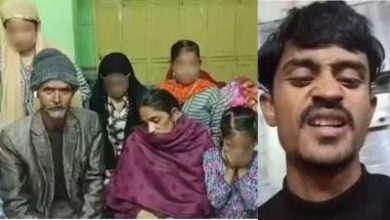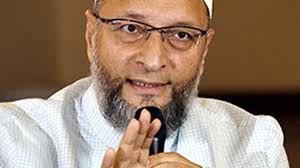Muslim representation in India’s higher education declines to 4.87pc: AISHE report
 New Delhi: India recorded a total of 43,268,181 students enrolled in higher education during 2021-22, with 2,108,033 Muslim students making up only 4.87 percent of the total enrolment.
New Delhi: India recorded a total of 43,268,181 students enrolled in higher education during 2021-22, with 2,108,033 Muslim students making up only 4.87 percent of the total enrolment.
According to Kashmir Media Service, this marks a decline from the previous years when the enrolment stood at 5.24 percent in 2019 and 5.5 percent in 2020, before falling to 4.6 percent in 2021. The Gross Enrolment Ratio (GER) across the country averages at 24.1, reflecting moderate access to higher education.
Indian illegally occupied Jammu Kashmir stands out for its higher participation rates in higher education, likely due to its Muslim-majority population. Out of 400,423 total students, 138,142 are Muslims, constituting 34.5 percent of the total enrollment. This reflects the region’s significant Muslim representation in higher education institutions. With a GER of 24.8, the region showcases moderate participation levels.
The AISHE Report 2021-22 (Provisional) underscores disparities in Muslim representation across states and Union Territories. For instance, the Andaman and Nicobar Islands have a total enrollment of 11,427 students, with only 609 Muslims, comprising a mere 5.33 percent. The GER here stands at 22.6.
In Andhra Pradesh, out of 1,929,159 enrolled students, 56,444 are Muslims, accounting for 2.92 percent of the total. The state has a GER of 36.5, reflecting better access to higher education compared to other states. Arunachal Pradesh, however, reports the lowest representation, with just 107 Muslim students out of 64,890 enrolled, making up only 0.16 percent. Its GER stands at 36.5.
In Assam, Muslim students make up 12.5 percent of the total enrolment, with 84,808 Muslim students out of 678,012. Despite this, the state’s GER is only 16.9, indicating significant room for improvement. Bihar also has a notable number of Muslim students—172,681 out of 2,622,946 total enrolments—accounting for 6.58 percent. The GER in Bihar is 17.1.
Chandigarh and Chhattisgarh reveal concerning trends. While Chandigarh reports a GER of 64.8, Muslim students make up only 0.62 percent of the total enrolment. Similarly, Chhattisgarh has 5,113 Muslim students out of 656,341, representing just 0.78%, with a GER of 19.6.
In Delhi, Muslim representation is 2.47 percent, with 28,282 out of 1,145,390 students enrolled. Goa fares slightly better, with 4.72 percent of Muslim students, yet its GER stands at 35.8. Gujarat has a GER of 24, with 2 percent of its total student body being Muslim.
Haryana and Himachal Pradesh show stark disparities in representation, with Muslim students forming only 0.99 percent and 0.41 percent, respectively. Haryana’s GER stands at 33.3, while Himachal Pradesh has a higher GER of 43.1.
States like Jharkhand, Karnataka, and Kerala reveal varying trends. Jharkhand has 4.34 percent Muslim enrolment and a GER of 18.6, while Karnataka reports 6.05 percent Muslim enrolment and a GER of 36.2. Kerala, with 14.36 percent Muslim representation, leads with a GER of 41.3, reflecting a significant Muslim presence in higher education.
Lakshadweep, a small Union Territory, has full Muslim participation with all 88 students enrolled belonging to the community. However, its GER is just 1.1. States like Madhya Pradesh and Maharashtra show modest representation, with Muslims comprising 1.4 percent and 3.38 percent of the total student bodies, respectively.
In Manipur, Muslims make up 1.5 percent of the student population, while Meghalaya reports 2.2 percent. Mizoram, Nagaland, and Odisha report alarmingly low Muslim representation at 0.28 percent, 0.49 percent, and 0.79 percent, respectively, highlighting significant disparities.
States like Punjab, Rajasthan, and Sikkim also struggle with Muslim representation, ranging between 0.48 percent and 3.45 percent. Tamil Nadu, with 3.5 percent Muslim enrolment, and Telangana, with 7.6 percent, fare slightly better.
In Uttar Pradesh, Muslims account for 4.68 percent of the total student body, with 326,819 Muslim students out of nearly 7 million enrolled. West Bengal has one of the highest proportions, with Muslims comprising 12.33 percent of its higher education enrolment.
The AISHE Report highlights the need for targeted efforts to improve Muslim access to higher education, addressing systemic barriers and ensuring inclusive educational policies.







